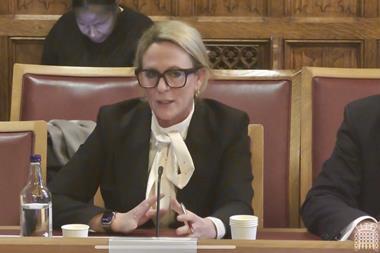While it can’t be completely eliminated, insurers are finding ways to identify and reduce fraudulent claims. Ann Hesketh reports
Arson, staged burglaries, claims exaggeration, accidents that didn’t happen – insurers are all too familiar with these common scenarios when dealing with fraudulent commercial claims.
And although the industry has worked hard to address the problem, with insurers reporting improved fraud detection rates, fraudsters have also stepped up a notch to keep themselves ahead of the game.
Mihir Pandya, fraud manager at Allianz, says that the industry is reaping the benefits of a more focused approach to commercial lines fraud. However, he admits that the work being done so far is only the tip of the iceberg.
He says that anecdotal evidence suggests that, in the past, commercial interests may have outweighed requirements to look into fraud risk. “I’m not convinced this is the case now. Over the last three years we have had a cross-division fraud group at Allianz, through which we share ideas and identify risks.”
But fraudsters are getting more sophisticated by the day and some believe that while the industry congratulates itself for the positive results it has achieved, criminals have already moved on to explore new avenues for defrauding insurers of their money.
“Fraudsters will pump the tyre up until it bursts,” says John Beadle, UK counter fraud manager at Royal & SunAlliance. “They know the level they can get way with and are constantly probing the system to find out which level they are likely to get detected at. The industry needs to be constantly alert to new scams and ways to commit fraud.”
According to figures released by the ABI, commercial lines fraud is costing the industry over £550m a year. Beadle explains that although fraud in commercial lines does not seem to be as prevalent, in terms of percentage of overall book of business as it is in personal lines, it is more costly.
“If you look at the industry in general, you see a marked improvement in fraud detection over the past few years,” he says. “But whatever you do you will never eradicate fraud. All you can do is identify the risks and make sure you have sufficient controls in place to mitigate them.”
Identifying fraud
In an attempt to address some of the issues, the ABI anti-fraud committee is carrying out more work to identify and understand the main risks within the commercial arena. “We are getting views across the industry,” says Pandya, “and the first step is to understand our current knowledge of how we identify fraud. This will enable insurers to examine their own fraud strategy to make sure they are looking in the right places.”
He adds that insurers tend to investigate the same two or three profiles of fraud, which means that they are still exposed to risks they don’t know about. “I worry when people say fraud detection doubled over the past year. How do we know, for example, that for every year that fraud detection doubled, the risk didn’t quadruple?”
But fraud detection is only part of the story. Another important step for the industry is to ensure that fraudsters are prosecuted. And if in the past insurers have blamed the police for not taking fraud cases seriously enough, Scott Clayton, claims fraud and investigations manager at Zurich, says that the landscape has now changed.
“The level of sophistication in commercial lines fraud is arguably greater than in personal lines,” he explains. “People whose businesses are failing, for example, see an insurance claim as an opportunity to address some of the financial pressures. We are building up more experience in these cases and we have found that if we take a strong case to the police they are happy to prosecute.”
He adds that having a team of dedicated fraud personnel helps maximise the chances of filtering through potentially fraudulent claims, providing the police with the data they need to press ahead with prosecuting the perpetrators. “It’s a team effort. We have in-house investigators who work closely with our loss team, from major losses right down to small business claims.”
One of the main hurdles for insurers is to change the attitude of potential would-be fraudsters that see the industry as a soft target.
“We will always have this battle with the public,” says Clayton. “We need to use these prosecutions to try and change the public perception that people can get away with fraud.”
Apart from trying to change perceptions, Pandya believes that there is much more the industry can do, beginning with tackling underwriting fraud. “We still see commercial policyholders not disclosing material facts at the inception of the policy,” he says. “Underwriting fraud is a serious issue that we, as an industry, need to tackle.”
Targeting gangs
Organised gangs, which can move from personal to commercial lines fraud, are another target for the industry. Yet while insurers are fully aware that these gangs operate in personal lines, staged motor accidents being an example, there seems to be a gap in awareness when it comes to commercial lines.
“We can see patterns emerging with the same gangs moving into other areas such as employers’ and public liability,” says Pandya, adding that Allianz has seen savings over the past two years from its liability book. “There is a lot more organised fraud going on in these areas. It’s a gap that the industry needs to close by sharing data across all types of business.”
He mentions that many firms such as garages, which are currently involved in facilitating motor fraud, also have their own insurance policies. “If these people have no qualms in committing motor fraud, what would stop them committing other type of frauds?”
But tackling fraud is easier said than done. Insurers always need to thread the fine line between picking up on potentially spurious claims and hindering the entire claims process.
“It is a fine balance,” says Pandya. “You could stop and look at every claim. By doing that genuine policyholders would suffer. On the other hand, you could let everything pass. We need to find a middle ground.”
Hosted by comedian and actor Tom Allen, 34 Gold, 23 Silver and 22 Bronze awards were handed out across an amazing 34 categories recognising brilliance and innovation right across the breadth of UK general insurance.











































